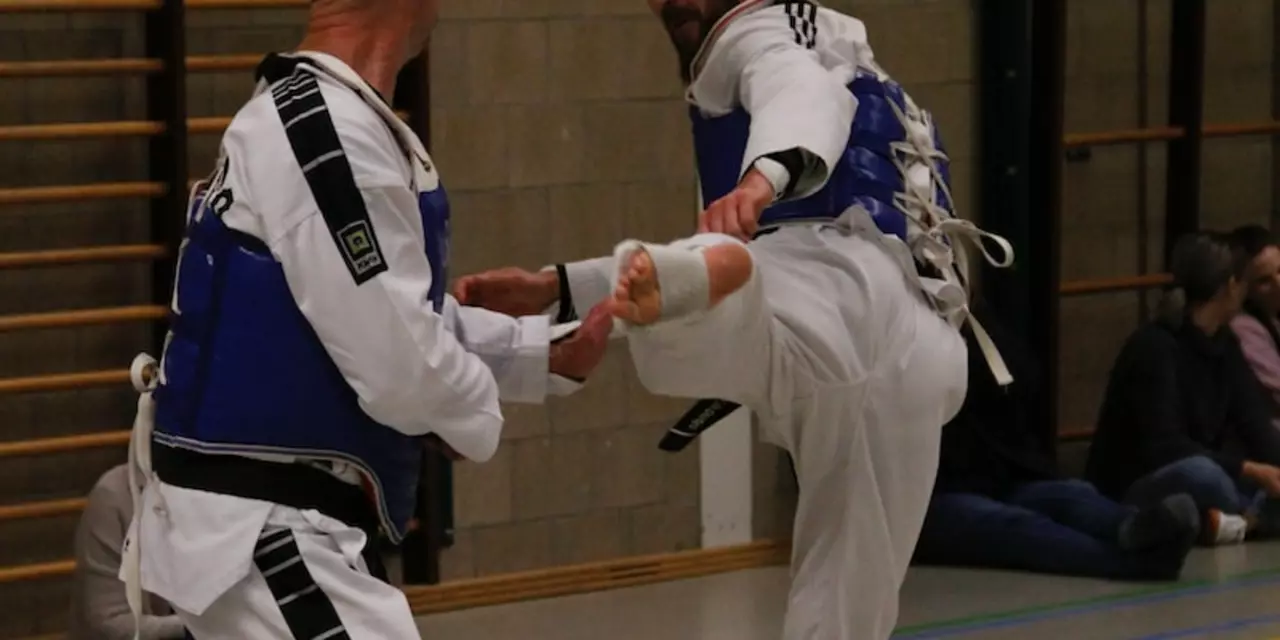Karate: The Complete Guide for Beginners and Enthusiasts
When you hear Karate, a traditional Japanese striking art that blends punches, kicks, and blocks. Also known as empty‑hand karate, it teaches discipline, timing, and self‑defence. Judo, a Japanese grappling system focused on throws and pins often appears in the same dojo because both arts share the same cultural roots. Understanding how karate’s striking style works alongside judo’s grappling helps you build a balanced skill set.
Karate’s core is striking, the use of punches, kicks, elbows and knees to control distance and create openings. While striking delivers the first impact, many practitioners pair it with grappling, techniques that bring an opponent to the ground and control them to cover close‑range scenarios. This combination mirrors competition rules in sports like mixed martial arts, where a fighter must flow from a clean karate strike into a judo‑style takedown.
Why Karate Still Rocks in Modern Training
Today’s fitness seekers love karate because it offers a full‑body workout without the need for heavy equipment. The repetitive katas improve flexibility, while kumite (sparring) builds cardiovascular stamina. If you compare karate to judo, you’ll notice judo emphasizes leverage over raw power, making it ideal for smaller athletes who rely on technique. Together, they teach you how to manage both standing and ground engagements, a skill set that translates well to real‑world self‑defence situations.
Many clubs, like Rochdale Judo Club, host cross‑training sessions where karate students try judo throws and judo students test karate strikes. This hybrid approach answers a common question we see in our posts: “What’s the most effective martial art, wrestling or judo?” By exposing yourself to both striking and grappling, you avoid the tunnel‑vision that can limit progress in a single discipline.
For beginners unsure whether to start with a striking art or a grappling art, consider your personal goals. Want fast‑paced cardio and confidence in standing fights? Karate’s kata drills and basic punches provide quick results. Looking to control an opponent without relying on strikes? Judo’s throws and pins teach you how to use an opponent’s momentum against them. Our articles also discuss how combining karate with a striking art like Muay Thai can boost power, while pairing it with Brazilian Jiu‑Jitsu adds depth to ground work.
Equipment is minimal: a gi or a karate‑specific uniform, a belt, and a clean training space. Safety gear—mouthguard, foot‑pads—keeps sparring sessions safe. Many clubs schedule beginner classes early in the week, allowing you to test the water before committing to a full schedule. This flexibility shows up in posts that compare “boxing or judo” decisions, highlighting that you can blend striking and grappling without over‑committing.
One common misconception is that karate only teaches high kicks. In reality, the art includes low kicks, sweeps, and defensive maneuvers that set up counters. When paired with judo’s foot‑work, these techniques become even more effective because you learn how to off‑balance an opponent before a throw. This synergy is a recurring theme in our collection, where we break down the mechanics of throws, grips, and strikes.
Progress in karate is marked by belt promotions, each representing mastery of a set of katas and techniques. These milestones echo judo’s kyu‑dan system, reinforcing the idea that both arts value structured learning. Whether you’re aiming for a first‑degree black belt in karate or a higher rank in judo, the journey teaches patience, respect, and strategic thinking.
Ready to dive deeper? Below you’ll find articles that answer burning questions like “Are you allowed to wear a black gi in judo?” and “Which striking art pairs best with Judo+BJJ?”. Each post offers practical tips, real‑world examples, and clear comparisons, so you can decide how karate fits into your broader martial‑arts roadmap.
Scroll down to explore our curated selection of posts – from technique breakdowns to training advice – and start shaping your own martial‑arts path today.
What are karate clothes?
Karate clothes are the traditional garments worn by practitioners of the martial art of Karate. They typically include a loose-fitting top, snug-fitting bottoms, and a belt. The color of the belt is usually determined by the individual’s rank or level of expertise. Karate clothes also allow practitioners to move freely and are made from lightweight and breathable material. Some schools may require the wearing of shoes or specialized gloves. The practice of wearing traditional karate clothing is intended to instil respect for the art and for the practice of its techniques.
